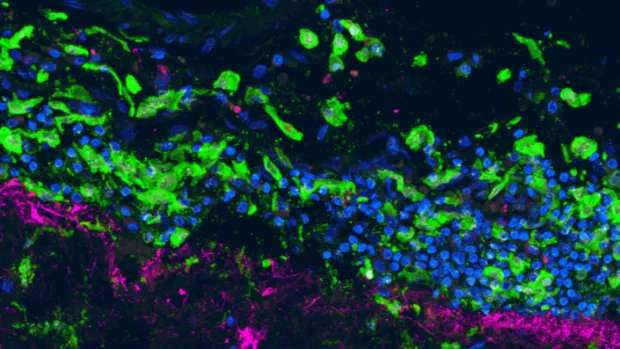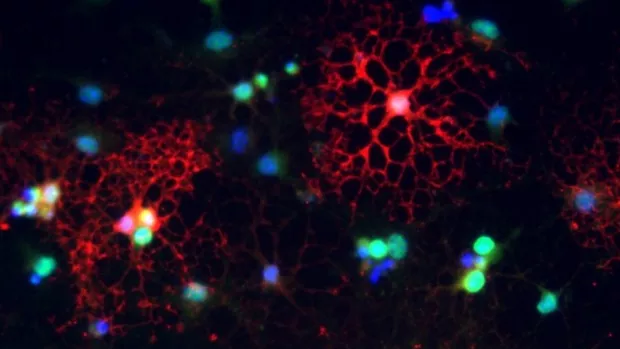
Under the microscope: mitochondria
Mitochondria. A word you might remember from school biology, and one you probably put in a box with the Pythagorean theorem and the French word for pencil case – a box labelled ‘never to be used again’.
Well here we are, again, revisiting why these tiny organelles are thought to be of huge importance in MS.
Mito-what?
Mitochondria! Described in every text book as ‘the powerhouse of the cell’, mitochondria can be thought of as microscopic digestive systems. They take in nutrients, break them down and create energy rich molecules for the cell to use.
Just like any cell in the body, nerves contain mitochondria to generate energy. But in progressive MS, dysfunction of the mitochondria and a resulting depleted energy supply is thought to contribute to damage to nerves and subsequent disability.
Let’s take a closer look
Nerves are surrounded by a protective fatty coating called myelin. But in MS, immune cells mistake myelin for a foreign body and attack it, causing damage. This damage is responsible for the symptoms of MS. Our bodies have the ability to repair some of this damage. But in progressive MS, the amount of myelin being damaged outweighs that being repaired. When myelin is damaged, the energy demand of the nerve increases and the cell body (the brain of the nerve), which is responsible for producing mitochondria, sends more to the area of damage to compensate.
The problem is that in MS, it seems the immune system’s attack also results in mitochondrial damage. The cell body starts to produce faulty mitochondria, which still get sent to the area of damage but don’t work as well as they should. These faulty mitochondria produce harmful molecules which cause further damage.
If a cell body is no longer capable of supplying the nerve with healthy mitochondria then the nerve may not be able to meet the increased energy demand imposed by demyelination. So in effect the immune system is launching a double attack which can eventually lead to nerve damage and disability.
Targeting mitochondria for treatment
So can we target mitochondria with a treatment to help people with progressive MS?
Dr Don Mahad has been researching just that. Don and his team are using post-mortem tissue to look deep into the nerve cells and answer questions about what goes wrong with mitochondria transport in progressive MS. And they’ve also developed animal models to see how problems with mitochondria can affect MS-like symptoms. So far they have shown that problems with mitochondria can cause fatigue and changes to walking.
When asked why he is so keen to understand mitochondria, Don is clear: ‘Once we know what goes wrong with the mitochondria in progressive MS, we can start developing therapies to fix it.’
We look forward to seeing the research progress. For now, we’ll be moving mitochondria into a box labelled ‘might come in useful’.
This blog first appeared in Research Matters magazine and was updated by our Research Communications team in May 2020 to reflect the latest insights. To receive Research Matters by post please contact [email protected] about subscription.



